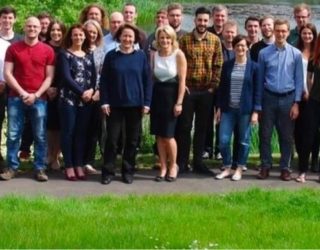Natural England have given species standing advice for local planning authorities who need to access planning applications that affect protected fish.
Survey reports and mitigation plans are required for development projects that could affect protected species, as part of getting planning permission or
a mitigation licence. Surveys need to show whether protected species are present in the area or nearby, and how they use the site. Mitigation plans
show how you’ll avoid, reduce or manage any negative effects to protected species.
This information should be used to decide what is needed for surveys and planning mitigation measures for protected fish.
Ecologists need to decide which survey and mitigation methods are right for the project they’re working on. If this standing advice isn’t followed, they’ll
have to include a statement with the planning application explaining why.
Get more detail on:
- mitigation licence form for the common sturgeon
- construction near protected wildlife (for developers)
- how planning authorities can assess applications involving protected wildlife
Consult the Environment Agency if the work you’re
planning is likely to affect inland, estuary, coastal waters and fish populations. You must also consult with the owner of any fishing rights attached
to a water body. This is often the land owner, but may be a third party, such as an angling club.
The Environment Agency has a duty to protect fisheries and should be informed of any survey activity. Some fish species such as trout and salmon have considerable
economic value. Work that affects the value of fishing rights might have to be compensated for.
Decide if you need to survey
Survey for fish if distribution and historical records suggest the following fish may be present:
- allis shad
- twaite shad
- vendace
- whitefish (also known as powan, gwyniad or schelly)
- common sturgeon
Surveys in or near protected sites
Several fish species are protected by being present in Special Areas of Conservation or Sites of Special Scientific Interest (SSSIs) (areas with special protection for the species found there), including:
- Atlantic salmon
- bullhead
- lamprey (brook, river and sea)
- spined loach
You’ll need to consult a Natural England Site Officer to survey these species in or near protected sites as you may need an SSSI consent.
Survey methods
The following are acceptable survey methods:
- riverside or bankside counts – use this method in slow-flowing clear water without much vegetation
- underwater counts using snorkelling or scuba diving – use this to measure species diversity and numbers
- electrofishing – commonly used on shallow water bodies
- Seine netting – used to sample larger, deeper water bodies
- trawling the water with a conical net – sometimes used to survey large areas quickly
The method chosen will be dependent on local conditions. Most surveys are carried out by electrofishing unless the water body is wide or very deep in which
case nets are likely to be used. You must consult with the Environment Agency if you’re electrofishing or netting as these methods will require a permit.
The movement of fish between waters will also require a permit.
Assess the impacts
Assess the impacts this development would have on protected fish if no mitigation measures were planned and submit the assessment with your planning or
licence application.
Examples of impacts include:
- work that introduces silt into a water body (particularly important where spawning habitats, such as gravel beds, are present)
- activity that interferes with the migration of fish, such as the erection of barriers or the obstruction of fish passes
- excessive light or noise, or reduced water quality can also inhibit fish movement
- activity that affects water levels and/or flow levels in a water body
- activity that changes the vegetation in the waterbody or on bankside
Mitigation and compensation methods
Address the potential impacts you’ve identified on fish by creating mitigation plans.
Mitigation measures can include:
- changing the timing of the project
- changing the layout of the scheme to keep the river and surrounding habitat intact
- ensuring that work on rivers does not create physical barriers to fish movement
- trapping sediment to avoid introducing it to water
- changing work practices to avoid excessive noise and illumination (especially at night) and impacts on water quality
Compensation measures can include improving or creating new habitat.
Only move (translocate) fish as a last resort. You must have a permit from the Environment Agency to move fish (not just common sturgeon) as it risks transferring diseases and invasive non-native species between water bodies.
If Natural England and the Environment Agency are consulted on the same planning application, Natural England will refer to this standing advice and the
Environment Agency will provide advice to protect fish populations.










